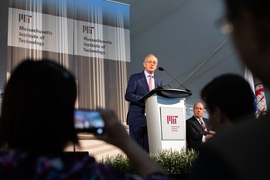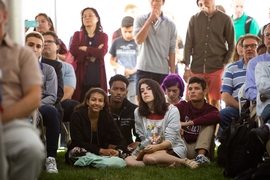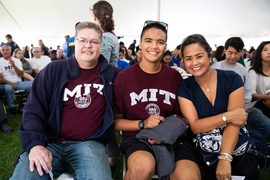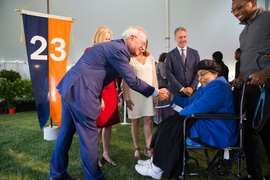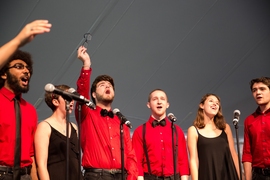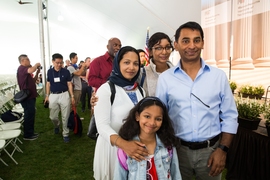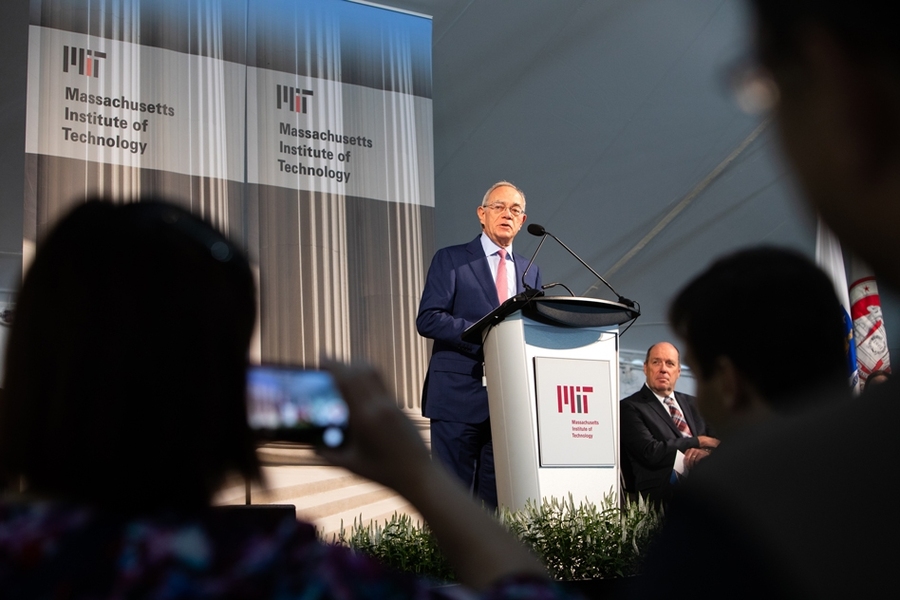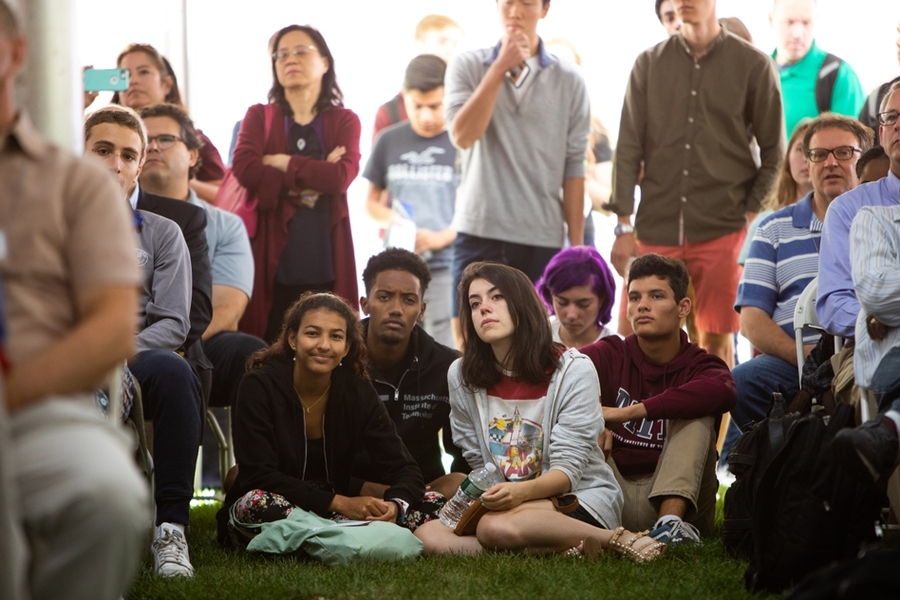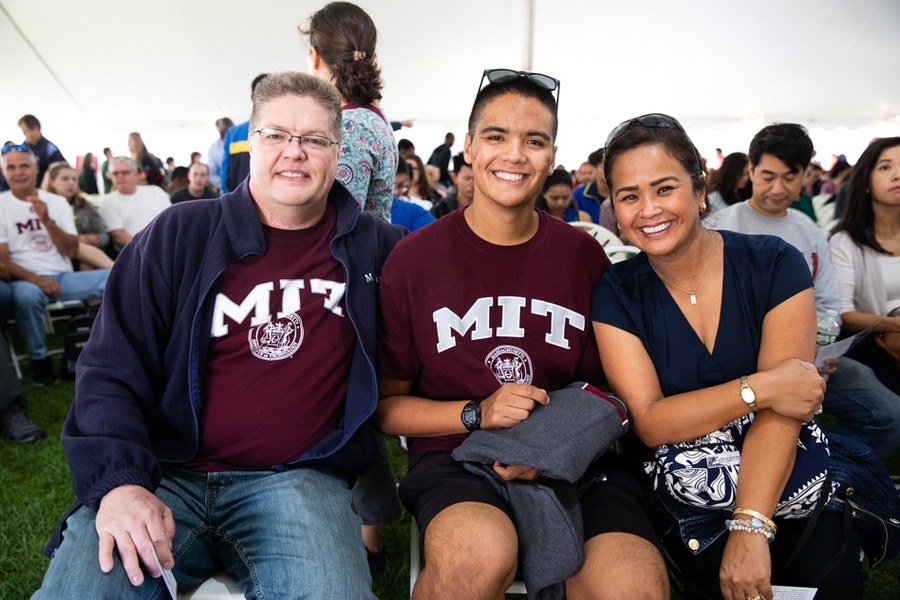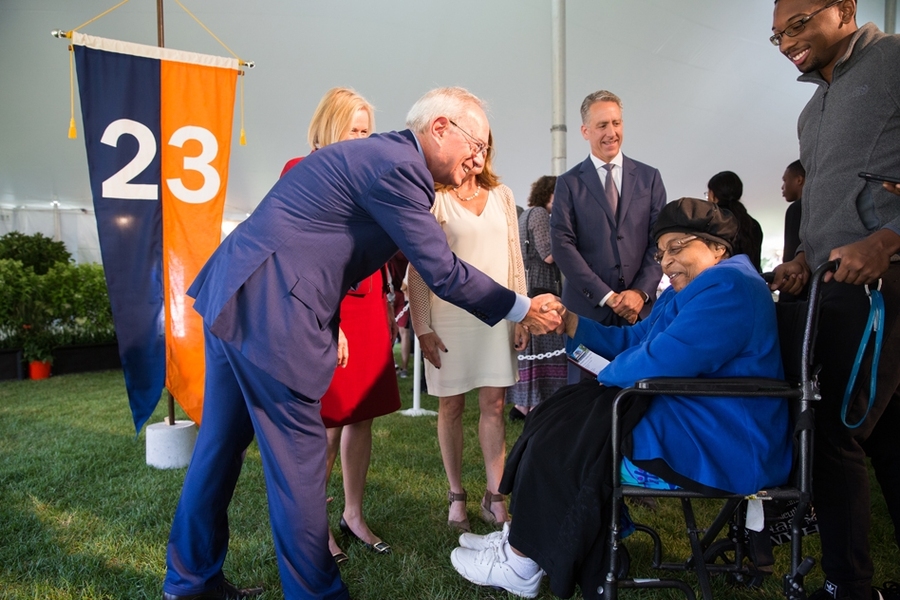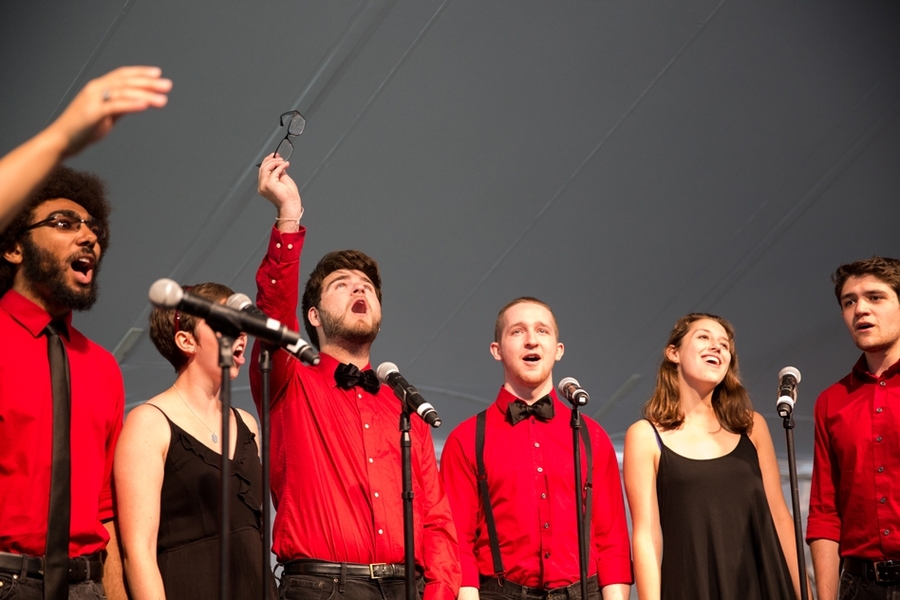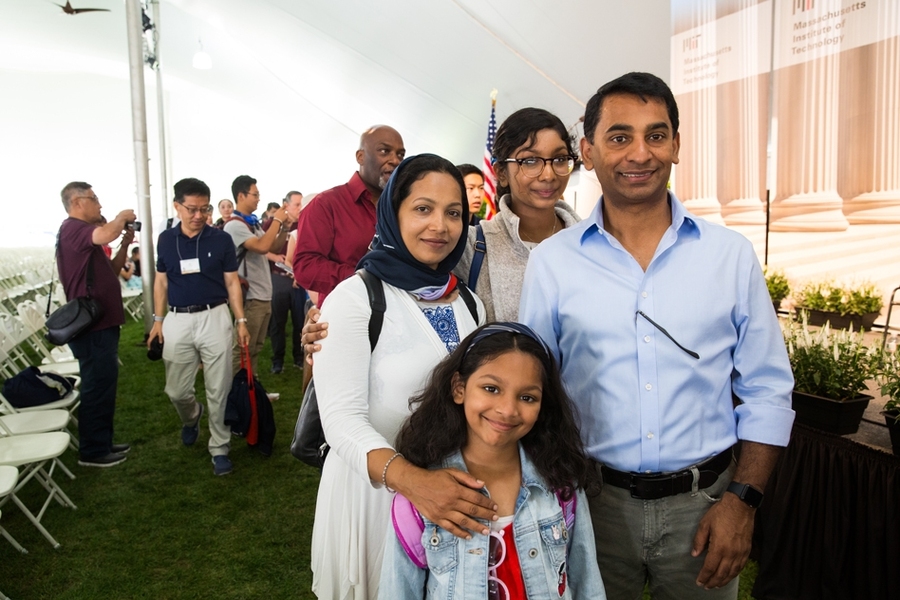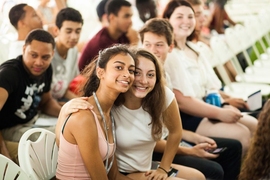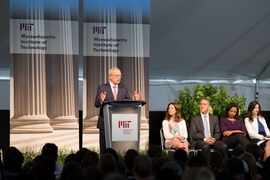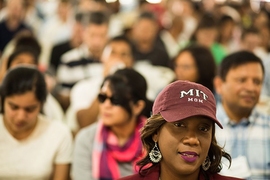With audible enthusiasm, students in the Class of 2023 and their families gathered under a tent in front of Kresge Auditorium on Monday at one of the first events of orientation week, the annual President’s Convocation for the first-year students.
President L. Rafael Reif introduced the crowd to MIT’s top leadership and recalled his own experiences when he first arrived at this campus, 2,000 miles north of his home in Caracas, Venezuela. “I was excited when I got to campus, but I was also anxious,” he said.
Coming from a place whose average annual temperatures vary from 72 to 75 degrees, he said, he “had a lot to learn about boots, winter jackets, and the art of layering.” And, like many people arriving at this campus for the first time, he said, “I wasn’t sure if I had what it would take to succeed.” But those fears were quickly dispelled, he added.
What he soon discovered, was “a community of students, faculty, researchers, and staff who were a lot like me — they loved to ask questions, they were passionate, they loved to tinker. Many of them came from someplace else. And they cared about helping each other and about helping society.” And, he added, “this is still the MIT I know today.”
Reif said that “here on this campus, I found my home. So no matter where you come from, I’m here to welcome you to your new home!”
That new home will undoubtedly produce both highs and lows, he said, adding, “You will enjoy great moments of success, but you may also experience moments of doubt.” He offered three pieces of advice to remember when those moments of doubt arrive.
First, he said, “You belong here!” MIT Dean of Admissions Stuart Schmill ’86 “has a remarkable knack for finding the right students for each year’s incoming class. You’re here because you belong here. Do not forget that.”
Second, “all of us experience doubts about ourselves — even the distinguished professors here on stage. Very often those doubts come out when you are trying something new or are pushing yourself. … Just remember, if you have doubts about yourself, it’s just a sign that you are learning.”
Finally, he said, “You are surrounded by a community that cares about you. All of us are dedicated to your success, and we believe in you. If you need help, please ask. Everybody, everybody needs help sometimes.”
Reif then introduced three professors who are also alumni, and who shared stories of their own early days at MIT. John Fernandez, class of ’85 and now director of the Environmental Solutions Initiative (ESI), led off by describing his three different arrivals at MIT. When he first arrived as an undergraduate, he wondered, “How will I relate to so many different people with so many different interests?” As a first-generation American whose parents had arrived from Latin America, he recalled, “I had so many questions.”
After earning his graduate degrees elsewhere, he returned 17 years later to join the faculty. “Being part of the MIT faculty is a total dream job,” he said, “because we get to teach and learn and work with MIT undergraduates.” His third new arrival experience came in 2015, when he and his wife moved into Baker House as heads of house. They soon mastered the initially bewildering array of acronyms and course numbers that are sprinkled throughout the language of the MIT community. Now, he says, “my wife and I now both speak really good MIT.” Each of those three times, he said, he learned that “you change a place when you arrive, by the decisions you make and the good graces of your actions.”
Fernandez then asked the new students to broaden their horizons. “Become a more effective MIT student, whatever major you choose, by learning deeply about human values, ethics, and their philosophical and social foundations” he said. “Learn these things from the experts. … MIT’s future and the world’s partly depends on it, and your future will be better for it.”
In addition, he said, “Ask a question of yourself: Now that you have arrived at MIT, what will you do about climate change?” Whether by joining one of many student groups, working with ESI, or through academic research, this is an issue that everyone needs to take on in a serious way, he said. “Go build the MIT the world needs and deserves,” he said, “because now you are MIT, and MIT is you.”
Julie Shah ’04, SM ’06, PhD ’11, an associate professor of aeronautics and astronautics, said that in her experience MIT “pushes you to be your best personally and academically, but you never had to do it on your own.” Faculty members and fellow students are always there to help.
Shah said, “People sometimes ask how I manage in such a competitive place,” but she found that in fact, people at the Institute are not competing with each other but rather competing to simply do the best they possibly can. “The only danger in asking a question here is that your friend or colleague or professor might spend an hour, or many hours, telling you everything they know about a topic.”
While many people talk about learning to juggle the many demands of life at MIT, Shah took the advice quite literally: “I spent I can’t tell you how many hours in Lobby 7 watching the juggling club,” she recalled. Shah then learned to juggle, and realized how crucial it is to pay attention to maintaining a balanced view — if you focus too much on just one ball, “the whole thing falls apart,” she said. The same applies to balancing the parts of one’s life, including the academic and the extracurricular: “It’s important to have a hobby that you really love, outside of your coursework.”
Marin Soljacic ’96, now a professor of physics, recalled arriving at MIT as a student from Croatia, never having been to the United States before. “I was surprised by quite a few things,” he said. One of those was the requirement to take eight classes in the humanities and social sciences in order to graduate. While he was initially skeptical, he said, “those ended up being some of my favorite classes,” and led to enduring friendships.
Describing the difference between classical mechanics and quantum mechanics, both of which he teaches classes on, Soljacic related a time when his wife was searching for her keys. Under classical mechanics, he explained, “things are always exactly where one leaves them. It’s quite remarkable when you think about it.” By contrast, in the world of quantum mechanics, the keys could quantum tunnel unpredictably to an entirely different place. According to his wife, this is a typical example of MIT humor.
Soljacic said that in traveling around the world, people often ask him to describe what is the special strength of MIT. “We have some money,” he said, but so do many other places. “We also have some great equipment,” but so do other institutions. “Our main strength really is people,” he said. “We have the best people in the world. And from this day forward, this includes you also, the best undergraduates in the world.”
